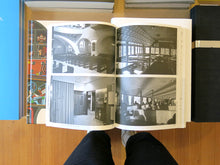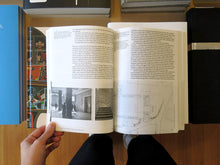
In the modern city, everyday life is increasingly moving towards the inside of buildings. The interiors of department stores, market halls, administration buildings, museums, or theatres are part of the experience of the urban dweller. Every inner world of the city has its own atmosphere and representative architectural language that supports its specific societal significance. In contemporary practice, these differences have largely disappeared. The more the exterior of buildings is invested with spectacular gestures, the more banal their interiors seem to become. Rather than registering this disappearance, this issue of OASE examines a range of strategies and design instruments for the public urban interior.
160 pages, 17 x 24 cm, paperback, Nai010 (Rotterdam).








